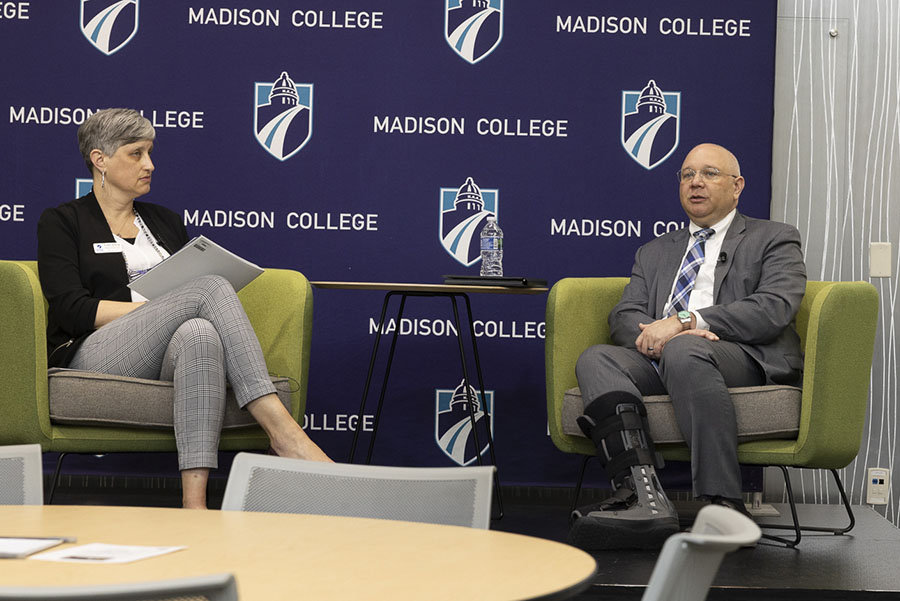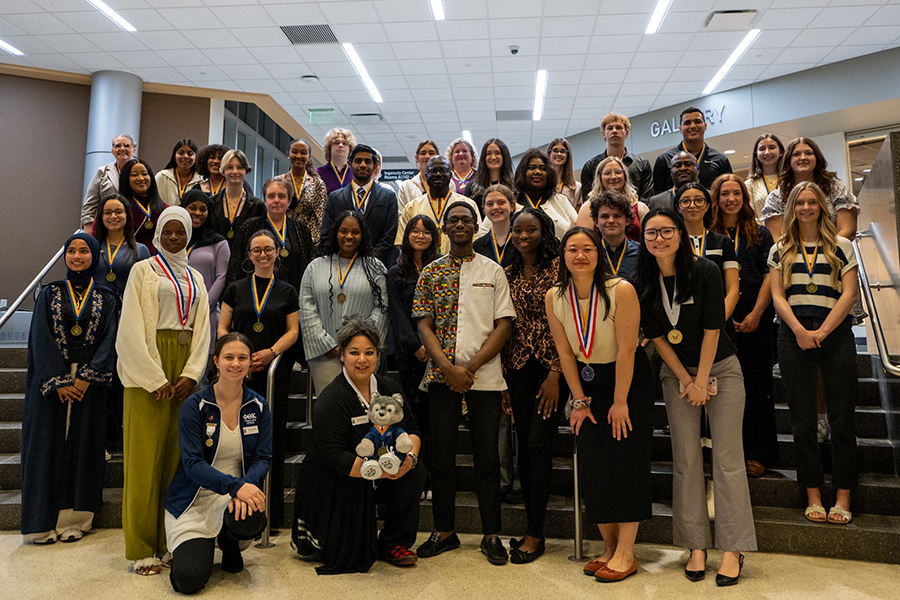Student Election turnout prompts questions
March 22, 2017
The results are in for the Madison College Student Senate elections, and it appears that 97 percent of eligible Madison College students did not vote. Senators are disappointed in this low turnout, and are in the progress of evaluating why turnout was so low and deciding how to increase it in future years.
One thing senators know for sure is that they want to increase student awareness of the senate and all it does. So, here is a brief overview of the Madison College Student Senate.
In the Madison College Student Senate, there are 19 senators and one senate president. Out of the 19 senators, four are elected from within the senate to become vice presidents.
The VP of Administration and Finance acts as a secretary and treasurer. The VP of Legislative Affairs is in charge of parliamentary proceedings, senate applications, and elections. The VP of Public Relations connects the senate with the students. And the VP of Team Development makes sure the senate works well as a team.
That leaves 15 senators, 11 for the Madison campuses and one senator each for the regional campuses – Reedsburg, Portage, Fort Atkinson and Watertown. The senate president oversees it all.
How does the senate work? There are three main parts of the senate:
The Executive Council is made up of the president, vice presidents and the senate advisor. This is the leadership of the senate.
The General Assembly is a meeting where everybody shows up and discusses what they have been doing and the progress they have made. These meetings are open to the public and happen every Thursday from 4:30-6:30 p.m. in room D1630B.
Committees are where the work gets done. There are three types of committees: standing committees, ad-hoc committees (for a specific issue, and only active for an academic year unless otherwise specified), and college committees. Right now there are a number of standing committees.
The senate committee on rules addresses concerns and changes to the constitution and bylaws of the senate.
The senate committee on legislative affairs is responsible for informing the students about decisions and legislation that affects them.
The senate committee on finance is in charge of the senate budget and three-year plan.
The senate committee on public relations educates students about the senate through events, publications etc.
The senate committee on team development plans new member orientation and retreats.
The senate committee on transportation and commuter services oversees the metro bus pass service, student shuttles, theB-Cycle program, and car-pooling initiatives.
Students can join these committees, which are vital in working towards achieving senate goals.
What does the senate actually do? What have they achieved?
A lot actually. The senate is responsible for the free metro bus passes, the B-Cycle station at Truax, the textbook rental program, and fitness center access for degree-seeking students.
What is the senate working on now? What are the goals of the new president-elect?
The senate’s big initiative is textbook affordability. They are working with the college’s academic council and the student affairs council to get costs as low as possible for students.
How are they working to lower textbook costs?
They want to move towards widespread textbook uniformity, develop a comprehensive rental program, and inform faculty about ways to lower costs for students.
In response to student feedback, the senate is also working on making sure the information that academic advising students are receiving is accurate, and takes into account each individual’s path to success.
Tina Marshalek, the president-elect is dedicated to continuing the work of the previous senate while also focusing on new issues.
One specific initiative for the new president-elect Marshalek is “advocating for students with un-traditional” backgrounds, including, but not limited to, international students, students who work full-time, homeless students, students who have independent status, and anyone who doesn’t fit the “typical” Madison College student profile. According to Marshalek, what people expect a Madison College student to be is someone from Madison trying to get into a UW school, or someone who does not have the finances to go straight to a four-year institution.
“That’s just not what every Madison College student looks like,” Marshalek said.































